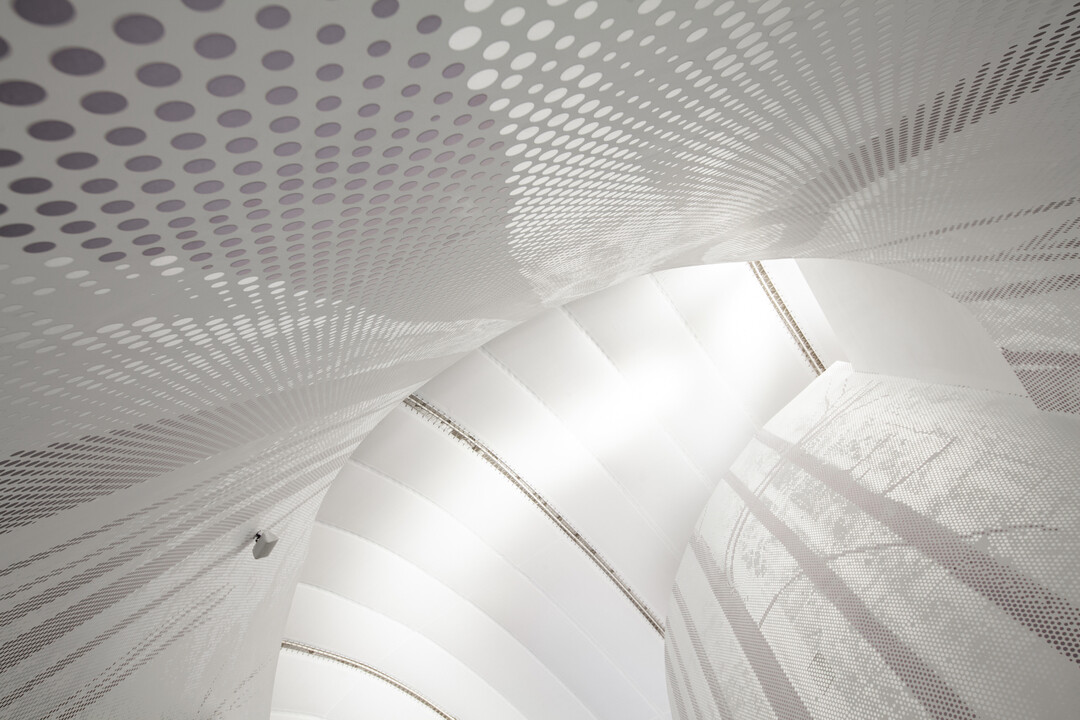
Members Only
Please join as a member and click "Members Only" to read more complete articles and exclusive content.

Please join as a member and click "Members Only" to read more complete articles and exclusive content.
「目目裏山」為座落竹北的住宅建築作品,面鄰文仁街,基地近似正方形,沈庭增建築師以六幢建築,A、B兩種住宅戶型為規劃。考量當地家庭生活需求及自然條件,涵蓋了居住安全性、便利性、隱私,以及饒富互動的室內空間設計。
建築規劃起源於竹北地區多半為雙薪家庭、擁有兩部車的基本設定。面向中庭的B戶型,一樓以停放兩部車為題,將樓梯安排接近置中,以應對上樓後,有效率地直入家庭核心。拾級而上,二樓是家庭核心的客廳與餐廳,樓梯居於兩者之中,既獨立且開放的區隔,衍生出可循環動線提升空間互動。餐廳在現代生活裡,除了用餐之餘,亦時常是工作、閱讀時喝茶、吃點零食的空間,因此顯得越趨重要,建築師在此處設計挑高兩個樓層,垂直空間引入充沛暖陽,光漫著牆面,徐徐領會時間的變化。引光之餘,樓梯連結著客廳,以及挑空區旁夾層,些許錯落的樓板之間,隨著輕巧細膩的淺灰色欄杆串連起整幢建築的生活片刻。
住宅外觀,原生清水混凝土的一樓樓梯,建築師笑稱像是進入太空艙的階梯,也像是一隻從地上長出來,站著支撐建築的腳。二樓,一口一口的窗景,是總高2.2公尺的落地門,稍微抬高門檻高度,搭配屋簷展現家空間親切且保有隱私的儀式氛圍,露台外的盒狀量體,打造天井般衛浴空間,同時也隱蔽了原突兀的結構梁。二樓以上,住宅前後、每處房間皆有陽台,走出室外,呼吸新鮮空氣感受暖陽,雖然社區棟距僅有6.6公尺,仍能保有住宅的獨立與自由。
面向道路的A戶型,隨著面寬的橫向帶動,樓梯從空間底部轉向二樓移居至空間中心,餐廳、廚房6公尺的挑空,同樣保有清爽明亮的核心空間。上至三樓,樓梯則移向底部,水平式的上下連結各處空間。「目目裏山」的由來,以建築連續構造的平面格局如「目」,且兩向鏡射的俯瞰造型得來;過去時常被忽略的樓梯於本案融入空間結構,強化住宅「裏」部的轉換力,繞「山」式的向上拾級,形塑自由動線為個體創造選擇性的獨立,使家屋更值得令人有所期許,為住宅空間賦予情感,豐富了家庭生活。
光線經由牆面進退而生的明暗對比,是空間之所以著迷的優勢之一。「住宅,不應只有給一個外殼」建築師談著設計思維,延伸到住宅建築規劃,成功地藉由內部空間帶動生活,領會出建築好的可能性。